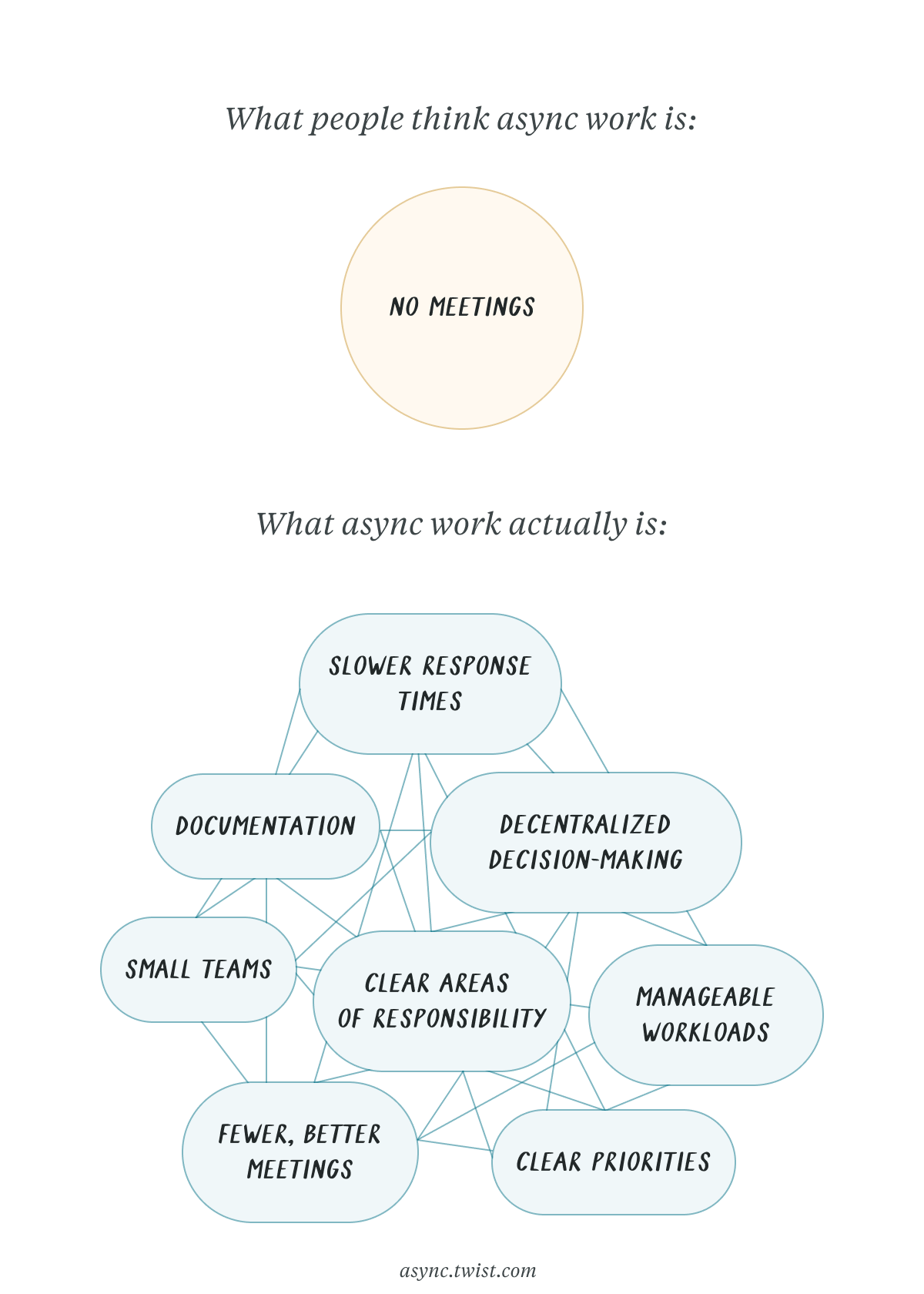Async work isn't just cancelling meetings
I thought this response by Becky Kane to Shopify publicly announcing that it’s cancelling 76,500 hours of meeting was not only a great example of identifying the issues underneath a problem, but also a masterclass in product marketing.
The Async Newsletter is from Twist, which positions itself as a collaborative messaging app for teams that doesn’t distract you. I’ve been meaning to try it for a while, and even more so now that I know how much they think about these things.
Kane’s point is that it’s easy to say ‘no meetings’ but this doesn’t provide another option for people. After all, if people are used to calling a meeting to share information, or because they’re not feeling ‘aligned’ as a team, or because they need to make a decision, how do they now do this?
As employees returned from their holiday break, the company’s leadership fired the first shot in an all-out war on meetings, and boy was it a doozy:Effective immediately, all recurring meetings with more than 2 people would be automatically removed from company calendars – canceling 76,500 hours of meetings per year in one fell swoop.
This hard-line anti-meeting policy — designed to give people back time for focused work – also included:
Given the masthead of this newsletter, you’d think I would applaud the move. But I’m skeptical it will have the kind of lasting impact on employee engagement and productivity that Shopify’s leadership team is aiming for.
- A 2-week cooling off period before any meetings are put back on the schedule
- Moving all large meetings of 50+ people to the same 6-hour window on Thursdays
- Reupping a rule that no meetings at all can be held on Wednesdays
You may have noticed that Shopify “reupped” No Meeting Wednesdays. A friend of mine who worked there told me that it was an open secret that everyone scheduled meetings on Wednesdays anyway because it was the only time that wasn’t already taken up with meetings.
Without bigger, deeper changes to company culture and operations, there’s no reason to think the same meeting creep won’t simply happen again. Or worse, that communication will be pushed into even more fragmented, distracting, and ultimately unproductive forms.
